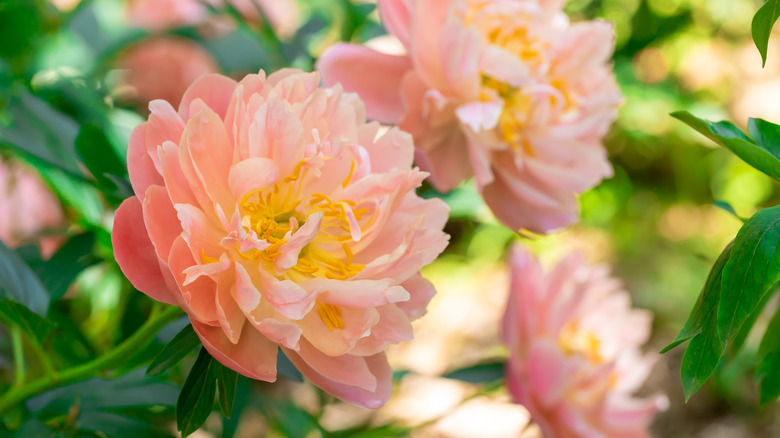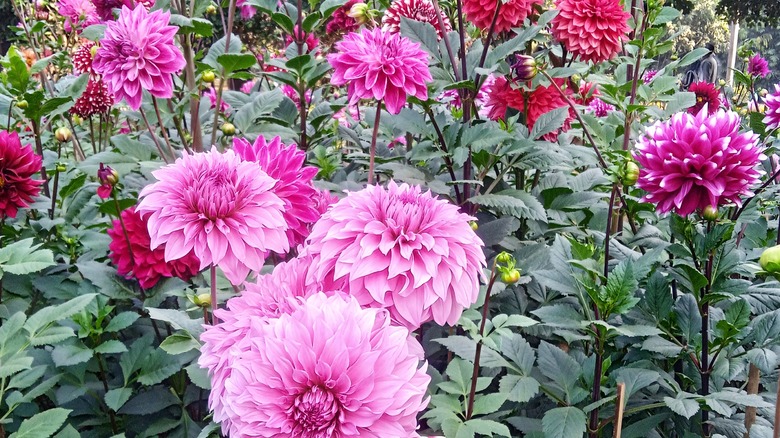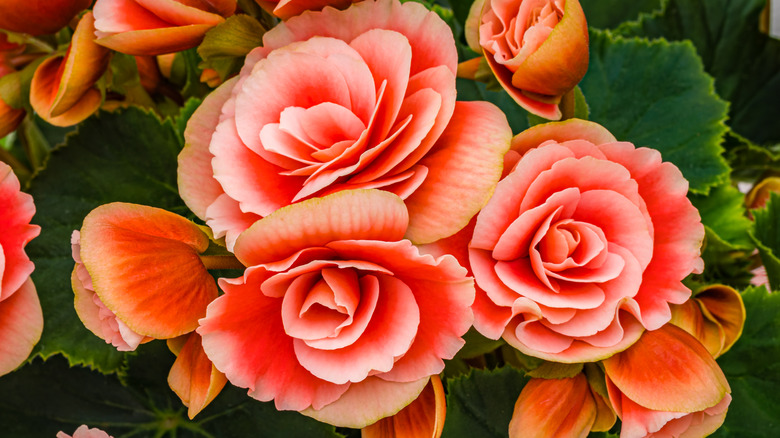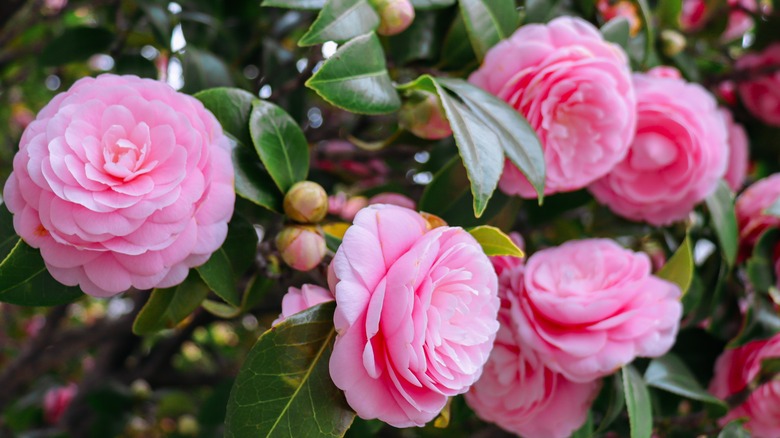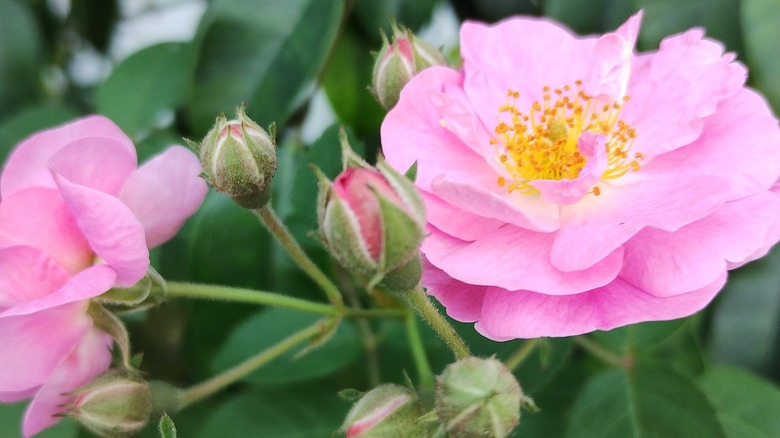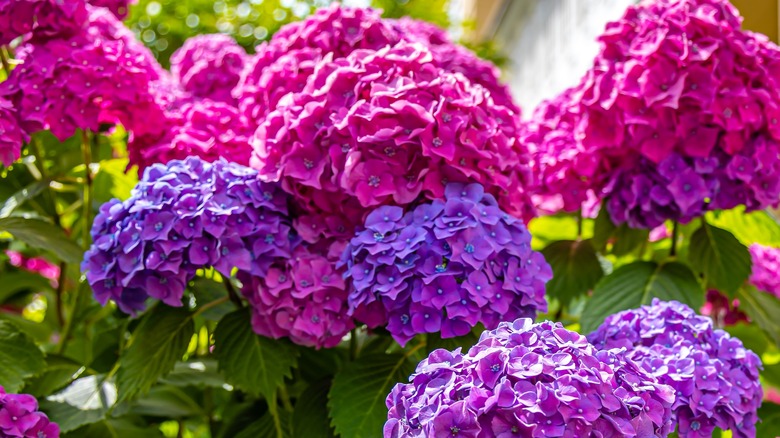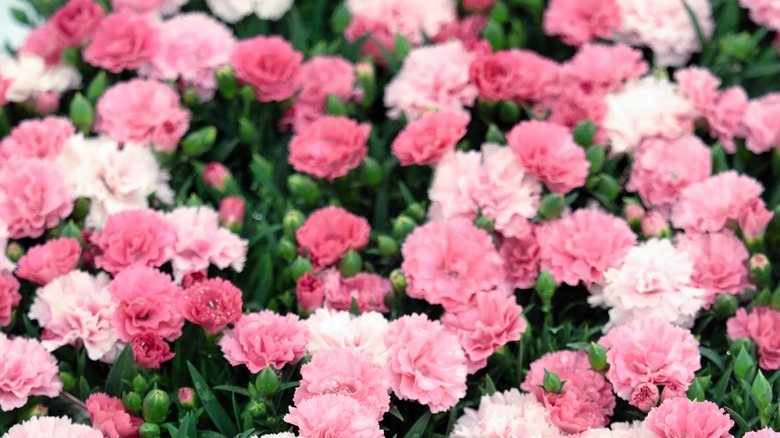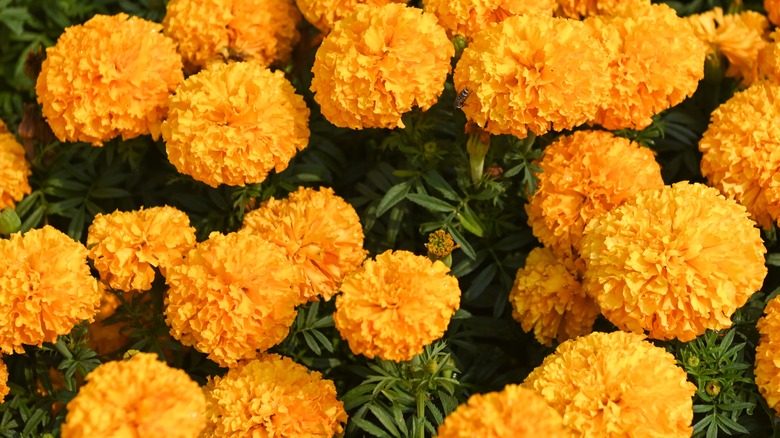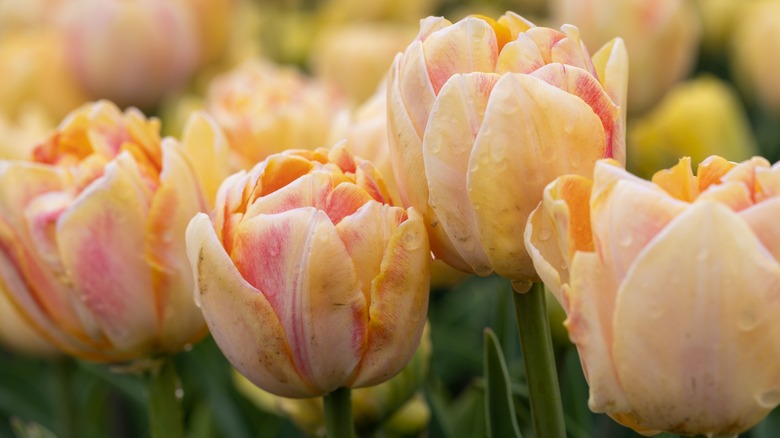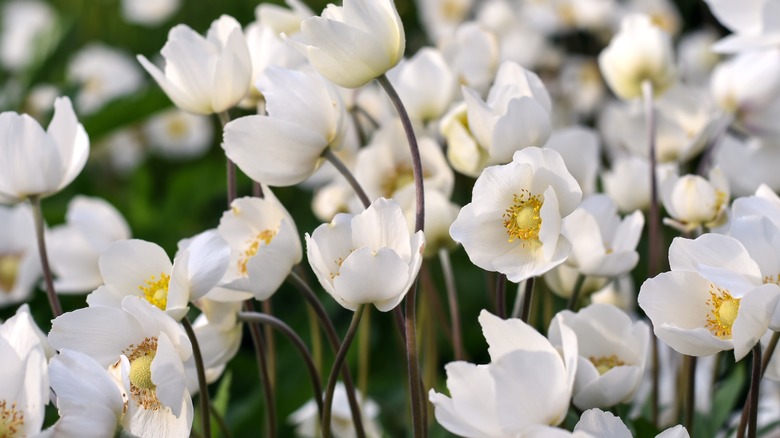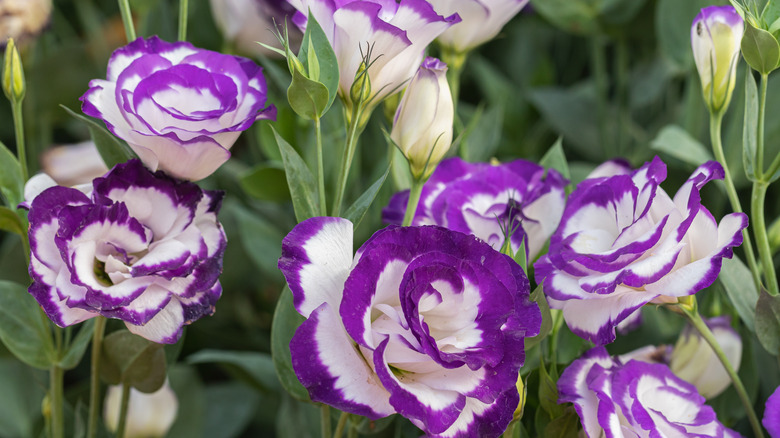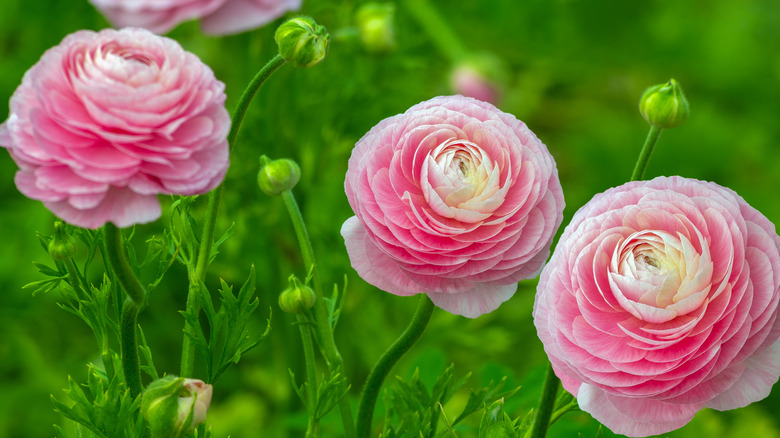If You Struggle To Keep Peonies Alive, Here Are 11 Stunning Alternatives
Peonies are stunning flowers that come in a wide range of colors, often performing as the star of the garden from the time they bloom in late spring until they fade in early summer. These show-stopping plants are undoubtedly a beautiful addition to the garden, but they can be finicky when it comes to care conditions, which leads many home growers to wonder if there are better alternatives that might be easier to cultivate.
If you want flowers to brighten up a partially shaded spot in your yard, peonies are certainly not the right choice because they only thrive in very sunny conditions. They also need rich and fertile soil, which will rule them out for any gardens where the soil quality is poor. Peonies perform best when fertilized regularly, so if you're not a hands-on gardener, you may suit a different type of flower that's more low maintenance. These pretty flowers also need soil that drains well, with plenty of growing room around them.
If you can't meet these requirements, there are plenty of alternatives to peonies that are equally as attractive, but easier to care for. Some peony alternatives bloom for longer periods of time, bringing color and interest to the garden for more of the season. From dahlias to carnations, there's sure to be a flower that will make the perfect peony replacement for any gardener who wants to fill their space with beautiful, easy-care blooms.
1. Dahlias are late bloomers that are worth the wait
Looking for a plant that brings color and beauty to your late summer garden and into fall? Dahlias are the perfect choice. These stunning flowers produce blooms that can measure anywhere from 4 inches to 1 foot in diameter. They are renowned for their extended blooming period, and come in a range of subtle and striking shades, from pastel peach through to ravishing red. Like peonies, these blooming beauties enjoy warm climates and sunny spots, but they can thrive in a range of soil types, including loamy, sandy, and clay soils.
2. Begonias produce fool-proof blooms all summer long
Begonias can be grown as houseplants or annuals in cool climates, or kept as perennials in USDA hardiness zones 9-11. There are several types available, but for ones that looks similar to peonies, opt for wax or tuberous begonias. These varieties produce double flowers in bright and cheerful colors. They are incredibly easy to care for, thriving in full sun or shade, depending on the type. They represent a very low-maintenance option, as long as their soil is kept moist. Blooming from early summer to the first frost, they add interest to the garden for a long time.
3. Camellias thrive in acidic soils
The common camellia (Camellia japonica), is a low-maintenance, evergreen flowering shrub, producing stunning flowers that look remarkably similar to those found on the peony plant. These blooms come in shades of red, white, and pink, flowering in late fall, winter, and early spring. For their first year, these plants need to be kept in evenly moist soil, but once established they can tolerate dry conditions and will thrive on neglect. Camellias grow best in acidic soil, much like rhododendrons. If your yard has alkaline soil, instead plant camellias in containers.
4. Add a sweet scent to the garden with roses
These classic perennial flowering plants are available in over 400 varieties, all of which grow elaborate or intricate blossoms. Standard roses, bush roses, and climbing roses are all good options for peony alternatives. The easiest roses to grow include rambling roses and English roses, which both produce blooms very similar to peonies. They grow best in well-draining, fertile soil, and can thrive in full sun or partial shade, depending on the variety. Like peonies, roses bring a sweet scent to the garden. They are incredibly versatile, suitable for container growing, use in borders, and privacy hedges.
5. Hydrangeas are resilient and robust
Hydrangeas are resilient plants that can be grown by beginner gardeners, making them an easy-care alternative for anyone who has struggled to keep peonies alive. To grow and take care of hydrangeas, you won't need any previous gardening experience, as long as you pay attention to where you are planting them. They perform best in well-draining soil in a position that receives a mixture of sun and shade. Some varieties are especially low-maintenance, such as the "Limelight" and "Incrediball" hydrangeas, which can both be grown in USDA hardiness zones 3-9.
6. Clove-scented carnations adapt to a range of conditions
Carnations have ruffled petals with delicately frilled edges that give them a sumptuous and romantic feel, much like peonies. These perennial plants flower in late spring through early summer in shades of pink, red, white, and yellow. Unlike peonies, which require specific care conditions, carnations will thrive in varied environments. They can adapt to both sun and partial shade, and perform well in a range of climates from USDA zones 5 to 9. If you enjoy the sweet scent peonies bring to the garden, carnations make a great alternative with the clove-like aroma they produce.
7. Marigolds bloom abundantly and deter garden pests
If you've tried and failed to grow peonies, marigolds will help to make you feel green-fingered in no time. These fast-growing plants thrive easily, making them a perfect choice for beginner gardeners. They produce frilly blooms, that resemble pompoms, in intense shades of orange, white, red, and yellow. Planting marigolds can benefit your garden if you struggle with pests, since their aroma will deter deer and rabbits. Marigolds need to be in a position of full sun for the most abundant blooms. They can tolerate drought, but will perform best in moist soil.
8. Double tulips can be mistaken for peonies
If you're on the lookout for a flower that could easily be mistaken for a real peony, the double tulip is it. Some gardeners even refer to these plants as "peony tulips," because the likeness is so uncanny. Unlike regular tulips, which produce six petals on each flower, double tulips grow an abundance of petals in layers, creating a plump and luxurious bloom in a rounded shape resembling a peony. Tulips are one of the easiest plants to grow for beginner gardeners. They grow from bulbs and can be planted anytime between September and December.
9. Plant anemones for vibrant color in spring and summer
These herbaceous perennials are exceptionally hardy and suitable for growing in USDA zones 3 to 10. They bloom in spring to midsummer, producing vibrant flowers in shades of white, pink, orange, yellow, purple, blue, and red. Though they perform best in full sun, anemones will also thrive in partial shade. They are a low-maintenance plant, representing a good option for anyone who wants color and interest in their garden, without the hassle of constant care. Anemones are toxic for both humans and pet when ingested, so keep them away from curious hands and paws.
10. Lisianthus is a showstopping flower that's popular in fresh bouquets
Lisianthus is one of the best flowering plants for your garden that are deer resistant. Like peonies, they produce showy flowers in shades of pink, red, and purple atop long, slender stems. They make excellent cut flowers, lasting between 10 and 15 days in a vase. Though they can be tricky to grow from seed, these flowers grow easily when transplanted, so it's best to buy an established plant from a nursery. Try the "First Love" variety for rosy-colored, ruffled double blooms that look stunning in the garden or a vase.
11. Ranunculus are ruffled romantic alternatives to peonies
Also commonly known as Persian buttercups, ranunculus produces huge flowers with luxuriously ruffled petals that remain in bloom for four to seven weeks. Flowers arrive on stiff stems that stand upright without support, unlike peonies which usually need staking. The best time to plant ranunculus bulbs is early spring or late fall. Position them in full sun or partial shade and watch them return year after year each spring in USDA hardiness zones 8-11. When grown in cooler climates, these plants can be treated as annuals. Ranunculus comes in a variety of stunning colors, including pink, purple, white, and yellow.
